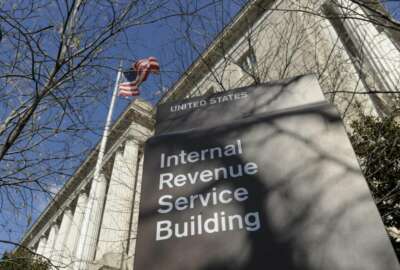
Fewer executives, bigger bucks?
Would taxpayers get more bang for their buck if federal agencies slashed 60% of their executive workforce while tripling the pay of those who remained in the career...
Would taxpayers get more bang for their buck if federal agencies slashed 60% of their executive workforce while tripling the pay of those who remained in the career Senior Executive Service? About 7,300 members of the SES are career civil servants. The rest are political appointees.
That’s the proposal of Jim Tozzi, one-time deputy administrator of the Office of Management and Budget and one of the architects of the Paperwork Reduction Act. He’s now head of the Center for Regulatory Effectiveness, an industry-financed “regulatory watchdog” lobby. He made his full proposal, “Senior Executive Service: A Lost Cause or a Lost Gem in Need of Rejuvenation”, earlier this month.
Tozzi said the plan would be budget-neutral while allowing agencies to get and retain top talent. The SES was setup by the Carter administration. It was modeled after the British civil service system and designed to provide a corps of top career executives who provide continuity—and expert advice—from administration to administration. Because of politically imposed pay caps over the years, many long-time feds in the SES, and down through grade 15 of the regular civil service, haven’t gotten full (or at times any) pay raises authorized for rank-and-file feds.
Members of the SES are supposed to be the best of the best and theoretically on call 24/7. Because of pay caps, some agencies say that many of the best and brightest up-and-coming workers decline jobs in the SES. From the 2021 pay scale, the rates are below. There is no locality pay for SESs, so they make the same regardless of where they work. Generally, pay ranges from $132,552 to $199,300, according to the Senior Executives Association, which said a minimum of $132,552, and up to $199,300 if they are in a certified pay system.
Tozzi’s “revenue neutral” cut-and-pay recommendation is understandably drawing mixed reviews from the Senior Executive Association, which represents most SES members.
President Bob Corsi said, “At least Jim got one thing right that SES pay has no comparison to what the private sector is paying for skills well below the scope of SES responsibilities. While he states that we should triple the salaries, there is no question that SES pay significantly lags the private sector when it comes to like responsibilities. Jim’s proposal to eliminate two-thirds of the top civilian leadership of the federal government to pay for the higher rates makes absolutely no sense to even comment on. The value that the SES brings to the table is huge given what they are asked do and more importantly, willing to do for public service regardless of the compensation. As to changes to the hiring process, the current process already requires that the Executive Resources Board in every agency screens the candidates and makes recommendations to the agency head for the final hiring decision, which then needs certification by OPMs Qualification Review Board to ensure that the candidate’s qualifications meet federal-wide standards. The process already uses agency SESs, and OPM uses cross-agency SESs in the certification process, so what value does an external advisory council add to the process…none in my view. Truly we have a “GEM” in need of adequate compensation!”
Congress would have to approve any major change in the SES (involving pay, structure, and mission).
Meantime, it is definitely food for thought. Every career civil servant (no matter the level of the job or its location) serves under an SES executive to some degree. It would be interesting to hear what they think of their top leadership. Are there too many and/or are they drastically underpaid? Or both? Or neither?
Nearly Useless Factoid
Made of three quarters hydrogen and helium for most of its remaining mass, the sun accounts for 99.86% of the mass in our solar system with a mass of around 330,000 times that of Earth.
Source: ThePlanets.org
Copyright © 2025 Federal News Network. All rights reserved. This website is not intended for users located within the European Economic Area.
Mike Causey is senior correspondent for Federal News Network and writes his daily Federal Report column on federal employees’ pay, benefits and retirement.
Follow @mcauseyWFED





